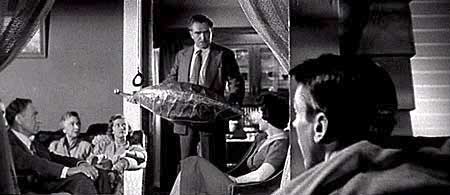
Pursuant to recent discussions pertaining to the “good”-ness of amplifier modeling technology, technicians in the Rock Town Hall Labs have undertaken a side-by-side comparison, in order to illustrate the innate differences between “real” and modelled amplifiers.
Following is an .mp3 file with four separate “takes” of the same simple riff — in this case, taken from the chorus of Deep Purple’s “Into the Fire”, off of In Rock. The drums and bass are the same in all four takes; only the guitar tracks are different. The first two takes feature (though not necessarily in this order):
- A Line 6 “Pod” set on “Brit High Gain” — a euphemism for a modern Marshall JCM 2000, set on “Ultra Gain,” or such like, and
- An actual Marshall JCM 2000, set on “Ultra Gain.”
The second two takes feature (again, not necessarily in this order):
- A Line 6 “Pod” set on “Brit Classic” — a euphemism for a classic, late ’60s Marshall Plexi or such like
- A Marshall JCM 2000, set on “Classic Gain” — i.e., modern-day Marshall’s attempt to provide as close to a vintage Plexi tone as possible.
Both “real” amp takes were played through a Marshall JCM 900 Lead 1960B cabinet (4×12), miked close with a Shure SM57.
Here’s what the RTH Labs need from you:
This is *not* an effort to see whether RTHers can tell the difference between “real” and “fake” amps — though if you want to hazard a guess as to which is which, you can do so for extra geek credit. Rather, this is an effort to determine which of each pair of takes is preferable, which in turn may lead us to make conclusions about the overall acceptability of modelling technology.
Note also that this is not an effort to determine which of the four takes you like best, though you’re welcome to share that tidbit as well, if you like. Again: Choose your preference between the first two “high gain” takes, then the “classic gain” takes.
Thank you for your assistance in this effort.

